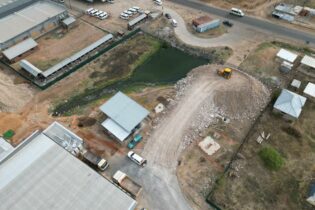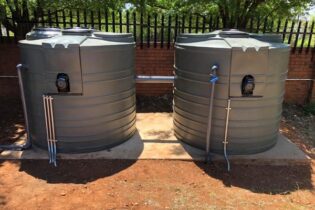Rising surfactant levels in wastewater are hindering treatment processes. Moleaer’s nanobubble technology offers a non-toxic solution to enhance efficiency and tackle this critical issue.
The word surfactant comes from “SURFace ACTive AgeNT,” which describes their chemical function: they lower the surface tension between two substances, such as a liquid and solid or two unmixable liquids. The structure of surfactants typically consists of a hydrophilic (water-loving) head and a hydrophobic (water-repelling) tail. This unique structure enables surfactants to interact simultaneously with both water and non-water substances, facilitating the formation of stable mixtures or emulsions. Surfactants are used widely in various industries, including personal care products, detergents, cosmetics, pharmaceuticals, paints and coatings, agriculture, and oil recovery processes. Common examples include sodium lauryl sulfate (SLS) found in most personal care products and benzalkonium chlorides (BACs), used in industrial cleaning. They contribute to the functionality, stability, and performance of these products and processes by modifying interfacial properties and improving interactions between different substances.Why is there an increase of surfactants in wastewater?
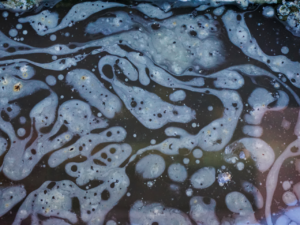 Most aerobic biological processes in wastewater treatment can manage low levels of surfactants and can be effective in removing them. However, they are difficult to treat at high concentrations. Several recent trends have resulted in elevated surfactant concentrations in wastewater, making surfactant removal more important than ever.
Most aerobic biological processes in wastewater treatment can manage low levels of surfactants and can be effective in removing them. However, they are difficult to treat at high concentrations. Several recent trends have resulted in elevated surfactant concentrations in wastewater, making surfactant removal more important than ever.- The pandemic and trends in surfactant-containing products. During the height of the Covid-19 pandemic, people were urged to wash and disinfect their homes, workspaces, schools, hospitals, stores, and themselves more frequently and more thoroughly, leading to higher concentrations of surfactants in wastewater discharged to the collection system. The move toward liquid soaps and concentrated liquid detergents and away from bar soaps and powdered detergents, a trend that preceded Covid-19, has also exacerbated the problem because liquid cleaners contain more surfactants than solid cleaners.
- Water conservation. Paradoxically, the success of water conservation efforts, plus the introduction of high-efficiency appliances that use less water, has also led to greater challenges for wastewater treatment facilities. While consumers are using less water to accomplish their household and cleaning tasks, which is beneficial from a climate perspective, they continue to use the same amount of soap and cleaning products. So, less water is being added to the collection system resulting in higher concentrations of surfactants in wastewater.
The problem
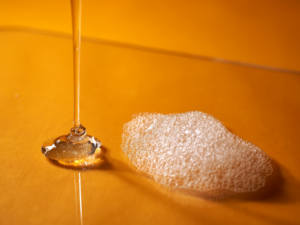 Although beneficial for many applications, the use of surfactants has negative consequences in wastewater treatment and the environment. They destroy aquatic microbial populations, damage fish and other aquatic life, and reduce photochemical conversion efficiency of plants. Surfactants also adversely affect wastewater treatment processes in both industrial and waste streams. When mixed in water with fats, oils, and grease (FOG), surfactants increase the complexity and cost of wastewater treatment because they interfere with nearly all water and wastewater treatment processes (physical, biological, and chemical). FOG and surfactants disrupt water treatment because they emulsify wastewater, impede oxygen transfer, interfere with separation, inhibit biological processes, and consume disinfection chemicals. FOG and surfactants cause issues like accelerated fouling of micro/ultra-filtration and reverse osmosis membranes, requiring more energy for backwashing and more chemicals for clean-in-place procedures. In some cases, the presence of these contaminants restricts the extent of treatment and water recycling that a municipality can cost-effectively achieve.
Although beneficial for many applications, the use of surfactants has negative consequences in wastewater treatment and the environment. They destroy aquatic microbial populations, damage fish and other aquatic life, and reduce photochemical conversion efficiency of plants. Surfactants also adversely affect wastewater treatment processes in both industrial and waste streams. When mixed in water with fats, oils, and grease (FOG), surfactants increase the complexity and cost of wastewater treatment because they interfere with nearly all water and wastewater treatment processes (physical, biological, and chemical). FOG and surfactants disrupt water treatment because they emulsify wastewater, impede oxygen transfer, interfere with separation, inhibit biological processes, and consume disinfection chemicals. FOG and surfactants cause issues like accelerated fouling of micro/ultra-filtration and reverse osmosis membranes, requiring more energy for backwashing and more chemicals for clean-in-place procedures. In some cases, the presence of these contaminants restricts the extent of treatment and water recycling that a municipality can cost-effectively achieve.Surfactants have an affinity to adsorb to the solids surface – a key characteristic for a cleaning agent. In wastewater treatment, they sorb to the sludge that is then sent to the anaerobic digester where they cannot be treated. In addition to creating inhibition in the anaerobic digestion process, they create foaming issues and reduced biogas quality.
Additionally they:
- Reduce oxygen transfer efficiency
- Lower oxygen transfer in the biomass
- Reduce biomass kinetics
- Interfere with solids separation and dewaterability of the sludge.
Combating the negative impact of high surfactant concentrations in wastewater treatment
Many of the symptoms of surfactants are often misdiagnosed as insufficient treatment capacity requiring costly infrastructure improvements to address. Alternately, some plant operators solve the problem with temporary fixes such as applying chemicals like QUAT blockers without long-term mitigation. Moleaer’s nanobubble technology offers wastewater treatment plants a non-toxic pretreatment method that removes surfactants from wastewater and improves the efficiency of downstream treatment processes including primary treatment, secondary treatment, and disinfection. In wastewater treatment, nanobubbles work like clean chemistry – changing the fundamental nature of the inhibitory compounds and delivering significant results. Some of the specific nanobubble properties beneficial to wastewater treatment include:- Size: The nanobubble has a diameter of < 200 nanometers and is invisible to the naked eye. Compared to a typical 1 mm fine bubble, these bubbles provide 10 000 times more surface area for adsorbing inhibitory compounds. Around a billion fit on the tip of a finger.
- Charged: Nanobubbles have a strong negative surface charge preventing them from coalescing as they spread throughout the water body.
- Stable: Nanobubbles are neutrally buoyant – they remain suspended in water giving the time for the reaction to happen.
- Hydrophobic: Nanobubbles are hydrophobic – and as such will attract the hydrophobic tails of the amphiphilic compounds.
- Internal pressure: The nanobubble has a diameter of 100 nanometers. As determined by the Young Laplace equation, these bubbles have a high internal pressure of 400 psi (27.5 bar). Therefore, these bubbles release tremendous amounts of pressure and heat energy when destabilised.
BluePlanet and Moleaer
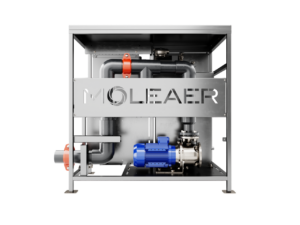 BluePlanet is in an exclusive agreement with the leaders in the field of nanobubble technology – Moleaer.
BluePlanet is in an exclusive agreement with the leaders in the field of nanobubble technology – Moleaer.“There are a number of nanobubble technology companies, but we chose Moleaer for their scalable, low-maintenance method of generation. You get nanobubbles and then you have Moleaer nanobubbles – the scale and performance are years ahead of other developments,” explains Rowan McDonald (RM), Head of Nanobubble Technology at BluePlanet South Africa.Moleaer nanobubble technology includes a water pump, a gas source (air compressor or oxygen concentrator), and a nanobubble generator core, which dissolves gas into water and generates the functional nanobubbles. The nanobubble generator has no moving parts and is low maintenance in design. Electrical requirements come from the pumping of water and low-pressure air/oxygen supply. Sizes vary from 9 m3/hour to 1000 m3/hour per module and multiple modules can be deployed.






